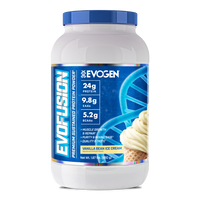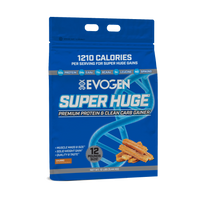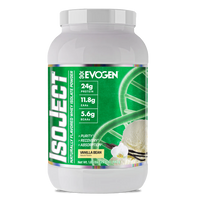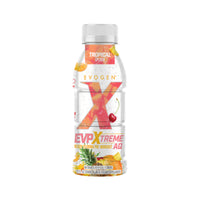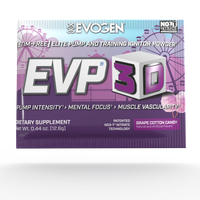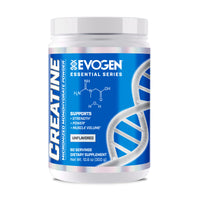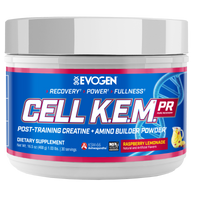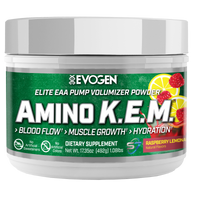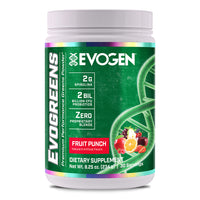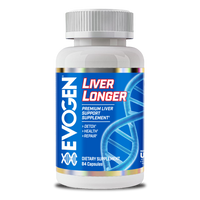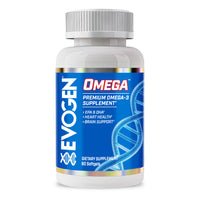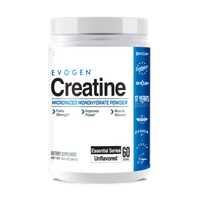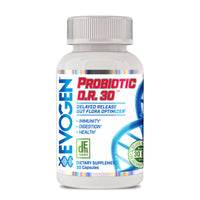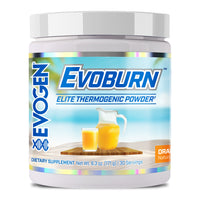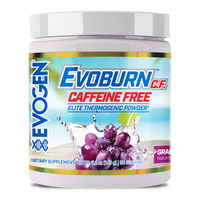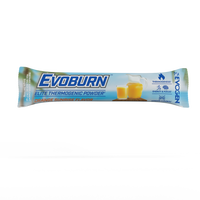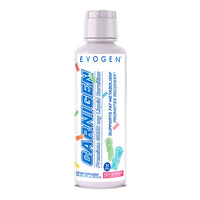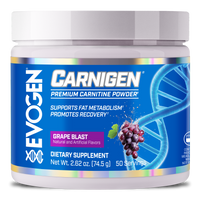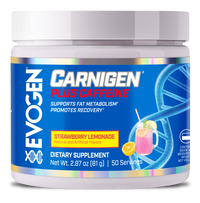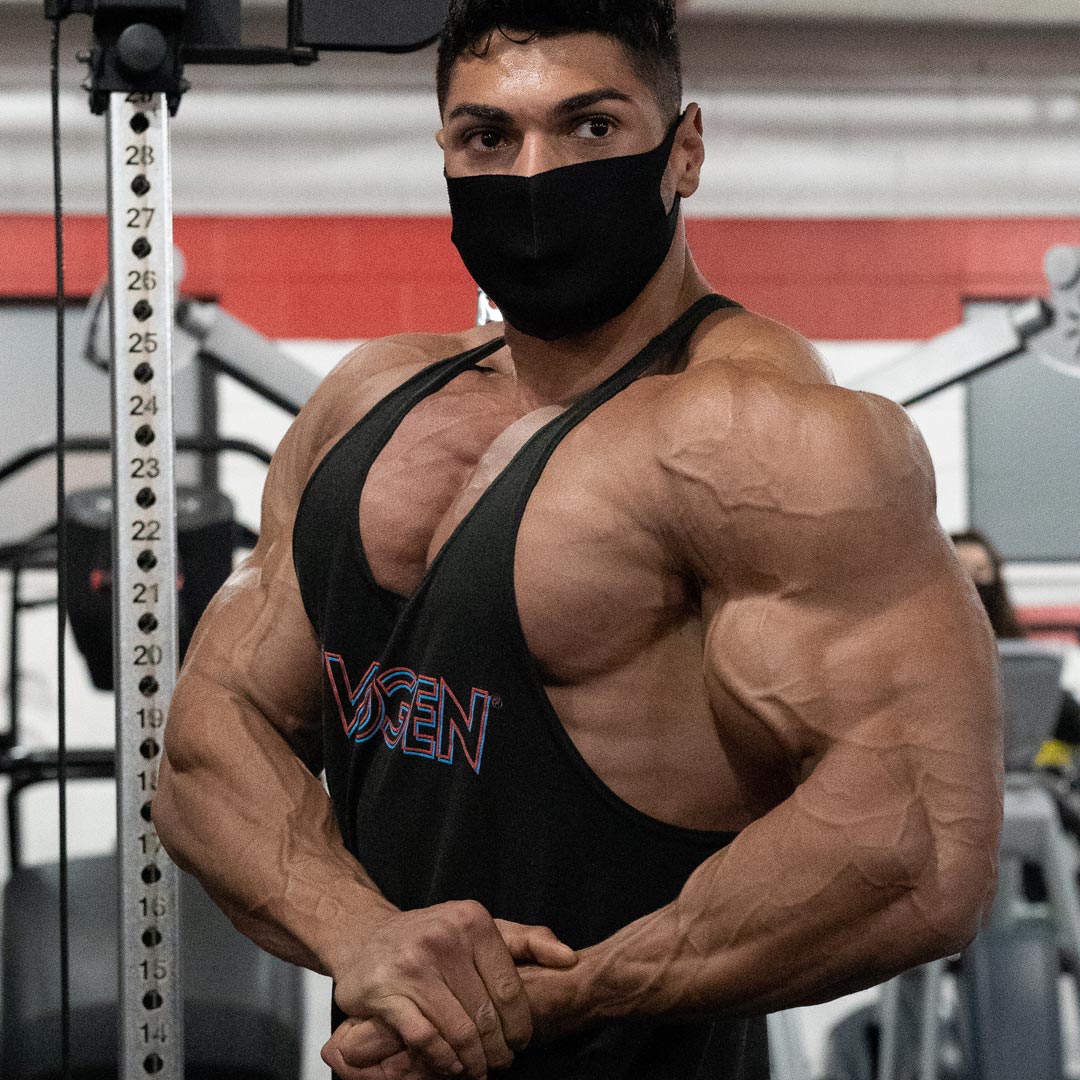For those not in the bodybuilding scene or deep into fitness may be saying, “Sarcoplasmic what?” Sarcoplasmic hypertrophy is simply a fancy way of saying, “THE PUMP.” You’ve heard of that, right? It’s what pretty much everyone in the gym chases during their workouts. It’s the sensation where your muscles become engorged with blood and swell, making you look bigger and swole (at least temporarily).
What Sarcoplasmic Hypertrophy Is NOT
It’s important to get this out of the way as it can confuse some people. Sarcoplasmic hypertrophy is NOT muscle growth. Despite your muscles appearing to be larger than before you worked out, the muscle fibers themselves have not changed in the sense of increasing size and density.
Sarcoplasmic hypertrophy also has no correlation with how much weight you can move or throw on the barbell. Those who can bench 500 pounds can achieve sarcoplasmic hypertrophy in the same manner that someone who benches 135 (assuming both can achieve the appropriate rep range).
The training style is a main contributor, however, for those pushing 500 pounds for only a couple of reps versus someone who can achieve 10. Those who are into powerlifting and their rep range is only 1-2, generally, will not achieve sarcoplasmic hypertrophy (or minimal at best) when compared to someone who works in a rep range of 10-15. That said, powerlifters tend to achieve greater myofibrillar hypertrophy in comparison.
It’s also the reason why when you look at some individuals in the gym with a lot of lean muscle mass, you may notice they aren’t overly strong. It’s all about the program they are using and what they are trying to accomplish. In fact, it’s common to find individuals who are much smaller than them, lifting heavier weights. This can be due to training styles and what their goals are (muscle hypertrophy versus strength).

What is Sarcoplasmic Hypertrophy?
To define sarcoplasmic hypertrophy, it is nothing more than increasing the overall volume of sarcoplasmic fluid (due to muscle glycogen, ATP, creatine phosphate, and water) found in the muscle cell itself.
Think of it as if you were taking a balloon and putting it over the faucet of your sink. Then, turn the water on and watch what happens. As water flows into the balloon, it expands and fills the inside of the balloon. Once the water is shut off, the balloon maintains that size until you remove the balloon from the faucet, and the water flows out – essentially bringing the balloon back to its original shape and form.
In the end, the balloon doesn’t increase in size after the water flows out. This is no different than what happens with your muscles and muscle cells. Once the increased fluid volume in the cell is gone, the overall size of the muscle decreases. It should be noted that this is due to the removal of excess sarcoplasmic fluid, not due to muscle catabolism or muscle-wasting.
When training for sarcoplasmic hypertrophy, it’s not uncommon to add a considerable amount of size through the increase in fluid. For instance, someone training arms could add upwards of one inch to their arms following their workout. But again, eventually, their muscles will return to their normal size until the actual muscle fibers are able to be built, and the true muscle fiber size increases (which takes a considerable amount of time and effort through consistent training and nutrition).
While sarcoplasmic hypertrophy is not permanent, it DOES play a role in overall muscle hypertrophy and growth – something we will touch on in another section.
How Should You Exercise to Achieve This?
There’s truly nothing special or complicated when looking to achieve sarcoplasmic hypertrophy. Your training should be done utilizing lighter weights, more reps (8-15 reps), and shorter rest/recovery periods between sets (less than 60 seconds). The cadence for each rep also needs to be slow and controlled with a count of at least two seconds on the concentric portion and a minimum of four seconds on the eccentric portion. The movement should also not be swung in an explosive manner or through the use of “cheating.”
Does Sarcoplasmic Hypertrophy Lead to Gains in Lean Muscle Tissue?
The short answer is YES – but somewhat indirectly.
Even if you were to somewhat “downplay” what sarcoplasmic hypertrophy really is (not something that is permanent), you’re still effectively tearing the muscle fibers when they are under tension and load through resistance training. These microtears in the muscle fibers then need to be provided the proper nutrients (such as protein) to help build and repair so that they can come back bigger and stronger.
Related Article: Importance of Using Carbohydrates to Build Lagging Body Parts
Sarcoplasmic hypertrophy, in itself, does not add functional mass to your physique. Progressive overload and proper nutrition/recovery can. With that said, you can stay “fuller” by hitting each muscle group more than once per week. If you utilize something like a push/pull split, you could effectively hit the muscle two or three times per week while still providing adequate time to allow the muscle to recover between workouts.
Many people prefer to utilize a pre-workout that enhances their pump to get a more impressive and fuller look during their workouts and following as well. Ingredients needed to achieve nitric oxide production are included in such pre-workouts to increase the desired effect.
Get That 3D Look You’re Trying to Achieve
Want to know the secret to achieve that 3D look? It’s simple. You need to enhance vasodilation and allow for improved blood flow into the muscle. This floods the muscle with not only oxygenated blood but also key nutrients that can help enhance your workout performance. When blood is more easily able to enter the muscle, it also allows for the opportunity to remove byproducts such as lactic acid from the muscle – improving muscular endurance and reducing muscular fatigue.
One product that can help enhance vasodilation and the pump is Evogen Nutrition EVP 3D. Not only is Evogen Nutrition EVP 3D a non-stim formula, but it is loaded with many other goodies to further enhance your workouts and overall performance. If you want to further increase muscle volume, stack it with Evogen Nutrition EVP AQ premium liquid muscle volumizer featuring liquid glycerol with S7™ nitric oxide blend technology.
If anyone knows about helping athletes achieve a 3D look, it’s Evogen Nutrition owner Hany Rambod. With clients like Phil Heath and Hadi Choopan, it’s clear the systems and methods he uses with client programs work.
Evogen Nutrition EVP 3D utilizes very specific ingredients like the patented NO3-T® and citrulline to drastically help improve vasodilation and the pump while also increasing vascularity. But the benefits don’t stop there. EVP 3D also utilizes powerful nootropics like lion’s mane extract (hericium erinaceus), L-tyrosine, and dimethylaminoethanol (DMAE) to help you heighten mental focus and allow you the ability to attain a solid mind-muscle-connection.
When you want to take your workouts to new heights and achieve sarcoplasmic hypertrophy, look no further than Evogen Nutrition EVP 3D – an elite pump and training ignitor! Available in three delicious flavors: Sour Watermelon, Tropic Thunder, and Peach Rings.

